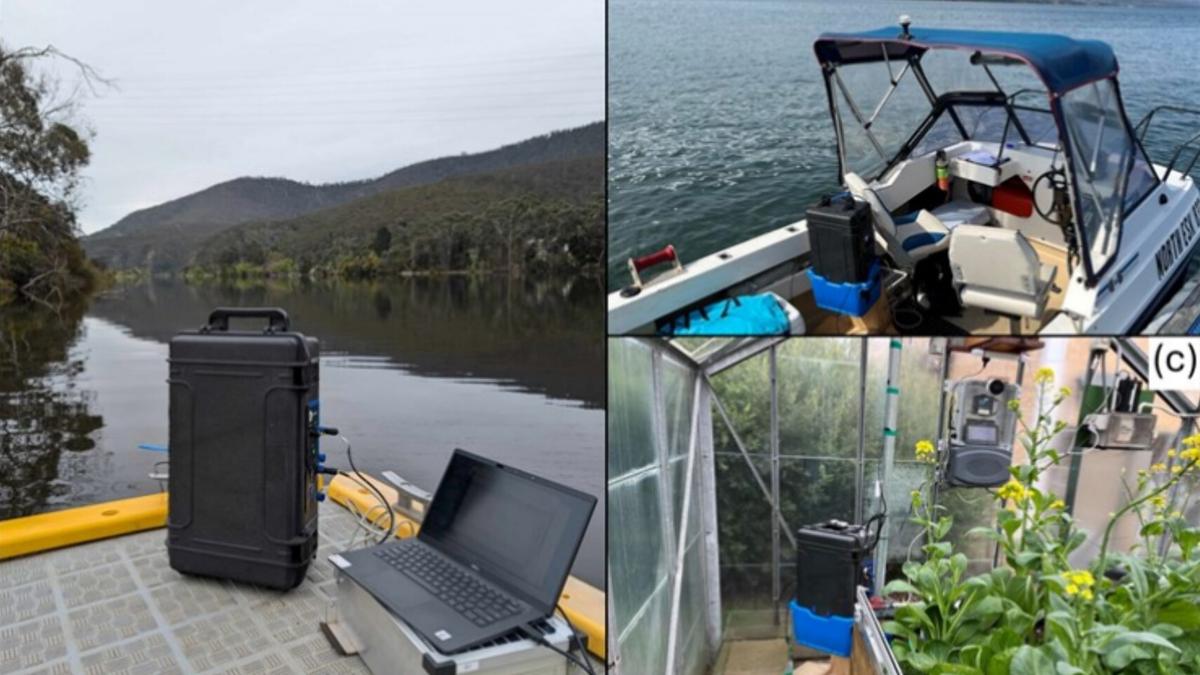Ion chromatography, or the process of separating ions from a sample by passing it through a long column, is usually carried out in a laboratory using expensive, sophisticated equipment. Now, scientists at the University of Tasmania in Australia have devised a simpler way to perform the technique out in the field — one that could benefit science classrooms, too.
Working with second-year undergraduate students, the scientists helped them analyse soil pore water, or water in between soil particles, immediately after collecting it using a portable ion chromatograph called Aquamonitrix. The students used it to separate and analyse concentrations of nitrate and nitrite ions in the sample as both these ions are known to be harmful for the environment in high concentrations. Then they took the samples back to the lab and analysed them using a conventional chromatograph.
Based on their findings, published in Journal of Chemical Education, the portable chromatograph produced results comparable to that of a conventional device in the lab.
Chemistry out of the lab
“One of the things we’re always interested in is taking our chemistry out of the laboratory [and] into the field,” said Brett Paull, a professor of chemistry at the University of Tasmania and the senior author of the study. “So that the students don’t only learn that analytical chemistry is something you do in the lab, but it’s something that you can do anywhere.”
The 2023 ACS Guidelines for Undergraduate Chemistry Programmes says “hands-on” experience in separations and chromatography should be incorporated into the undergraduate chemistry lab coursework. While performing ion chromatography using lab equipment does help students get experience with handling experiments, it still doesn’t equip them to apply their analytical skills in a real-world scenario.
Paull and his team collaborated with Aquamonitrix, the company that manufactures the portable ion chromatograph of the same name, to help young undergraduate students analyse samples in the field.
“Portable instruments give us the opportunity to go out into the field and do actual measurements there,” said Dr. Paull.
Simplicity to its benefit
The students first obtained the soil pore water by extracting it from the soil using a portable vacuum pump. Then they filtered the water on-site and directly injected it into the chromatograph.
Aquamonitrix works as a simple, low-pressure ion chromatograph that can separate anions along a relatively short column. The solution used to carry the sample into the chromatograph and facilitate the exchange of anions with the column contains only sodium chloride, thus keeping the process environmentally friendly.
To specifically detect nitrate and nitrite ions among all the anions, the device contains a low-cost absorbance detector that uses UV light. Because both these anions absorb UV light, the students were able to see two peaks in the chromatogram corresponding to the presence of the two anions.
“Nitrite and nitrate absorb quite reasonably in that low UV region, and we don’t get any interference from any other anions,” Dr. Paull explained. “So [its] simplicity is to its benefit, because we don’t get a big messy chromatogram with all the other material.”
A simpler specialist
When the students brought the sample back to the lab and measured nitrate and nitrite levels using a conventional, commercial ion chromatograph, they found the numbers produced by the portable device were similar. This suggested the portable method provided accurate results — and for less money and time.
The lab-based ion chromatograph is “much more complicated, much more expensive and advanced,” Dr. Paull said, and works using longer columns and high-pressure pumps. It may also detect many other anions and produce a more complex chromatogram.
“We don’t want to do everything,” he added. “It’s not possible to take a $100,000 laboratory instrument and just take it out to the greenhouse and use it. What we do is develop a $10,000 instrument which actually can do one or two things very well, can be run by a battery, and can be used by a student who’s not highly trained or highly skilled. We’re not trying to replicate the lab in the field; we’re trying to develop low cost, versatile instruments that can be taken into the field.”
The scientists have also worked on another similar instrument that they say can measure ammonia levels in the field.
“So, nitrite, nitrate, and ammonia and then, [eventually] you can look at the complete nitrogen cycle in, say, water treatment plants or in soil chemistry,” Dr. Paull said.
The team is also working on a similar instrument to detect arsenic in contaminated soils and agricultural areas. The presence of this toxic element in the soil is a major concern in countries like India and Bangladesh, where groundwater extraction is high.
‘They learn more’
But the main reason the scientists worked on this instrument is to use it as an effective teaching tool.
“By allowing students to perform both field and laboratory analyses, [the portable device] provides a comprehensive learning experience that combines theoretical concepts with practical applications,” Vipul Gupta, a lecturer in chemistry at Deakin University in Victoria, Australia, said. “The hands-on nature of the experiment, coupled with the opportunity to address real-world environmental challenges, fosters curiosity and interest in analytical chemistry.”
Dr. Gupta expressed belief the exercise can be extended to a more long-term continuous monitoring on the field as well.
“Moreover, I believe the use of such portable systems would encourage students in future to develop their own innovative analytical chemistry projects,” he added.
“I think getting students enthusiastic about analytical chemistry [is] hard if they’re always enclosed within the lab,” said Dr. Paull. “If you actually take them outside of the lab and show them you can actually do analytical measurements in that real world situation, outside in the environment, it makes it a much more enjoyable situation for the students.
“They learn a lot more.”
Rohini Subrahmanyam is a freelance journalist in Bengaluru.
Published – September 17, 2025 05:30 am IST
